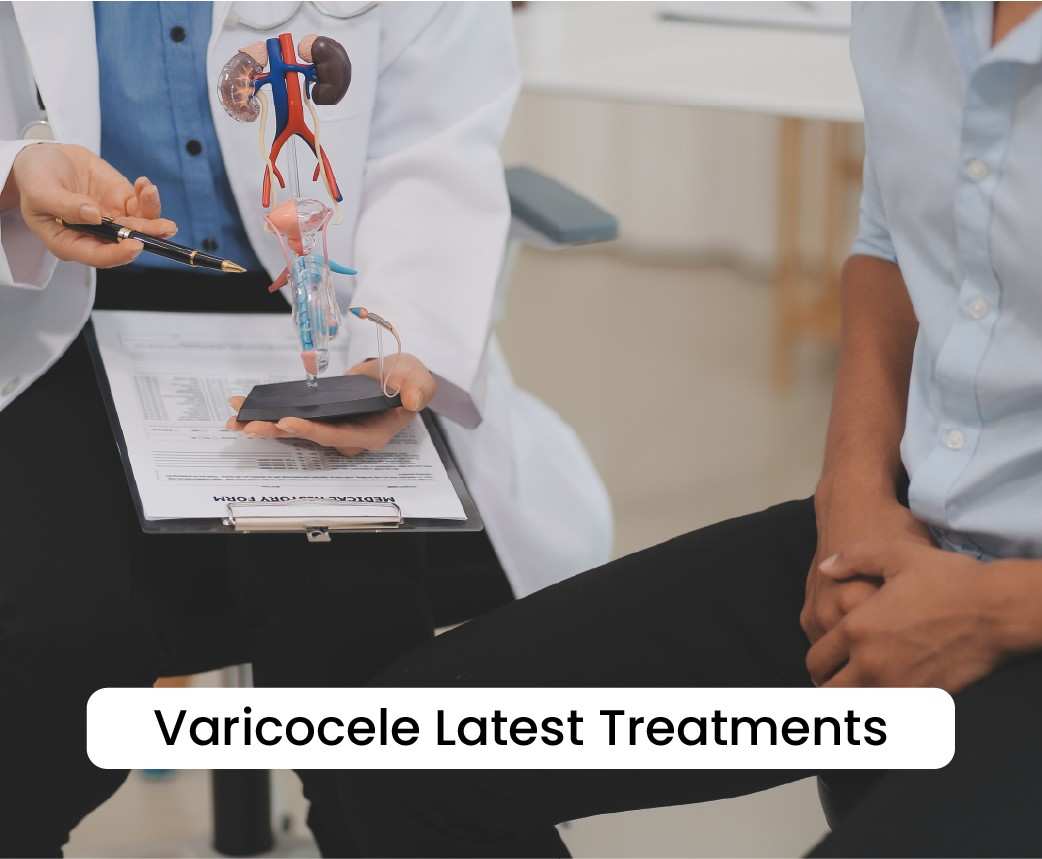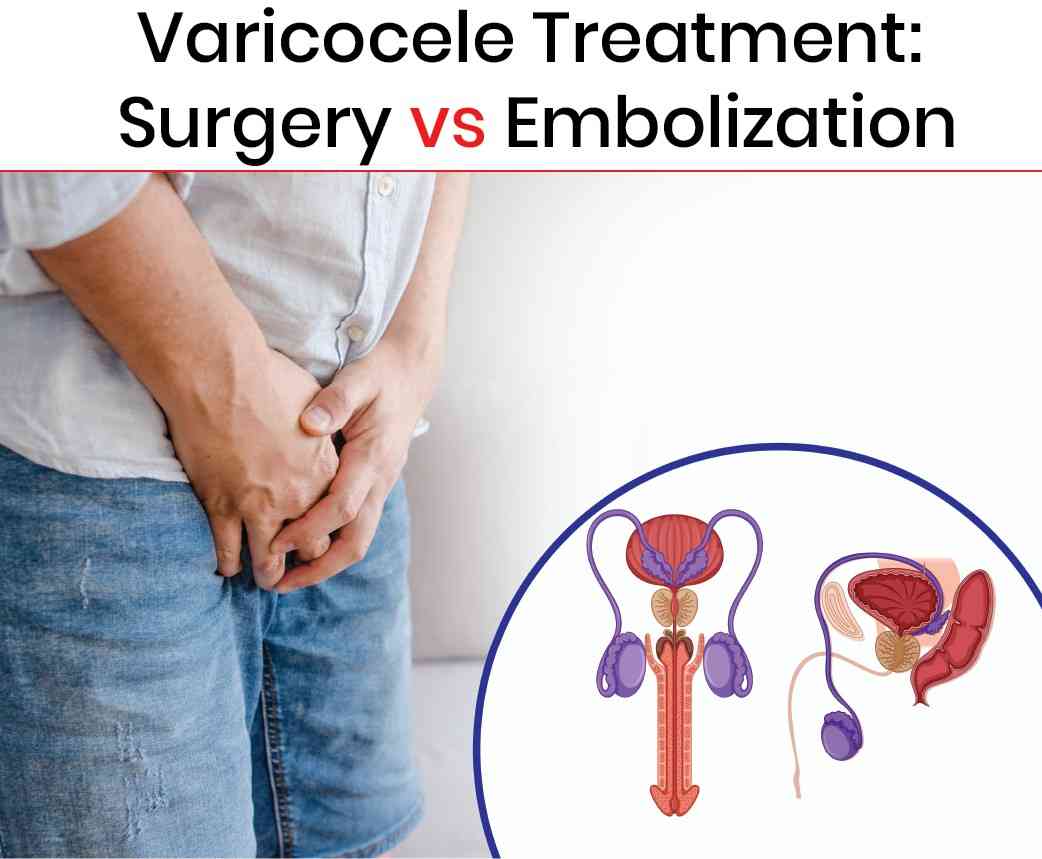A varicocele is a condition that occurs when the veins inside the scrotum become enlarged and twisted, similar to varicose veins in the legs. These veins, known as the pampiniform plexus, are responsible for draining blood from the testicles. When they become dilated, the condition can lead to discomfort, pain, and in more severe cases, infertility. Varicocele is a common issue, affecting around 15% of men, with a higher prevalence among adolescents and young adults.
What is Varicocele?
Varicocele typically develops on the left side of the scrotum due to anatomical factors that make blood drainage more difficult in the left testicular vein. This pooling of blood causes the veins to enlarge, which raises the temperature inside the scrotum, impacting the testicle’s ability to produce healthy sperm. While many men with varicocele remain asymptomatic, those who experience symptoms report:
- A dull, aching pain in the scrotum, particularly after prolonged standing or physical exertion.
- Visible or palpable enlarged veins within the scrotum.
- Testicular swelling or a reduction in size of the affected testicle.
- Fertility issues, such as a low sperm count, poor sperm motility, or decreased sperm quality.
For men experiencing fertility problems or significant discomfort, medical intervention is often necessary to prevent long-term complications.
Importance of Treating Varicocele
Varicocele is a leading cause of male infertility, accounting for up to 40% of cases in men seeking treatment for reproductive issues. The condition raises the temperature in the scrotum, impairing the function of the testicles, which in turn affects sperm production and quality. Over time, untreated varicocele can also lead to testicular atrophy, a condition where the testicle shrinks due to prolonged damage. Treating varicocele can improve fertility, relieve symptoms, and prevent further testicular damage.
Latest Interventional Treatment: Varicocele Embolization
One of the most advanced and minimally invasive treatments for varicocele is varicocele embolization. This procedure has emerged as a preferred alternative to traditional surgery due to its effectiveness, safety, and rapid recovery time. Performed by an interventional radiologist, varicocele embolization offers men a less invasive option with excellent long-term outcomes.
What is Varicocele Embolization?
Varicocele embolization is a non-surgical, image-guided procedure that involves inserting a small catheter into the femoral or jugular vein. The catheter is then guided to the dilated veins in the scrotum. Once in place, a tiny coil or special liquid (sclerosing agent) is introduced into the abnormal veins to block blood flow. This redirects the blood to healthier veins, relieving pressure and restoring proper circulation.
How Varicocele Embolization Helps:
- Minimally Invasive Approach:
Varicocele embolization is performed through a tiny puncture in the skin, eliminating the need for large surgical incisions. This reduces the risk of complications such as infections and results in a faster recovery time compared to traditional surgery. - Outpatient Procedure:
The procedure is usually performed on an outpatient basis, meaning that patients can go home the same day. Most patients experience minimal discomfort and can return to normal activities within a day or two. - No General Anesthesia Required:
Unlike surgical treatments, varicocele embolization is typically performed under local anesthesia or mild sedation. This reduces the risks associated with general anesthesia, particularly for patients with underlying health conditions. - High Success Rates:
Varicocele embolization has demonstrated high success rates, with about 85-90% of patients experiencing symptom relief and improvement in fertility outcomes. Studies have shown significant increases in sperm count and motility following the procedure. - Low Risk of Recurrence:
The risk of recurrence is lower with embolization compared to surgical treatments. Because the procedure targets the abnormal veins directly, it effectively eliminates the source of the problem with a reduced chance of varicocele returning. - Faster Recovery Time:
The minimally invasive nature of the procedure allows for a quicker recovery. Most patients can resume light activities within 24-48 hours, and strenuous activities are typically permitted within a week.
Who Can Benefit from Varicocele Embolization?
Varicocele embolization is an excellent option for men experiencing pain, discomfort, or fertility issues due to varicocele. It is particularly useful for those seeking a minimally invasive solution or those who have experienced a recurrence of varicocele after previous surgery. The procedure is also suitable for men who are not candidates for general anesthesia or traditional surgery due to other health concerns.
Varicocele is a common condition that can significantly impact a man’s fertility and quality of life. With advancements in interventional treatments, varicocele embolization offers a minimally invasive, safe, and effective option for managing the condition. This procedure provides excellent outcomes with minimal downtime, making it an ideal choice for men seeking relief from varicocele-related symptoms and fertility improvement. As interventional radiology continues to evolve, procedures like embolization are transforming how varicocele is treated, offering hope for better fertility and long-term health outcomes for men around the world.


